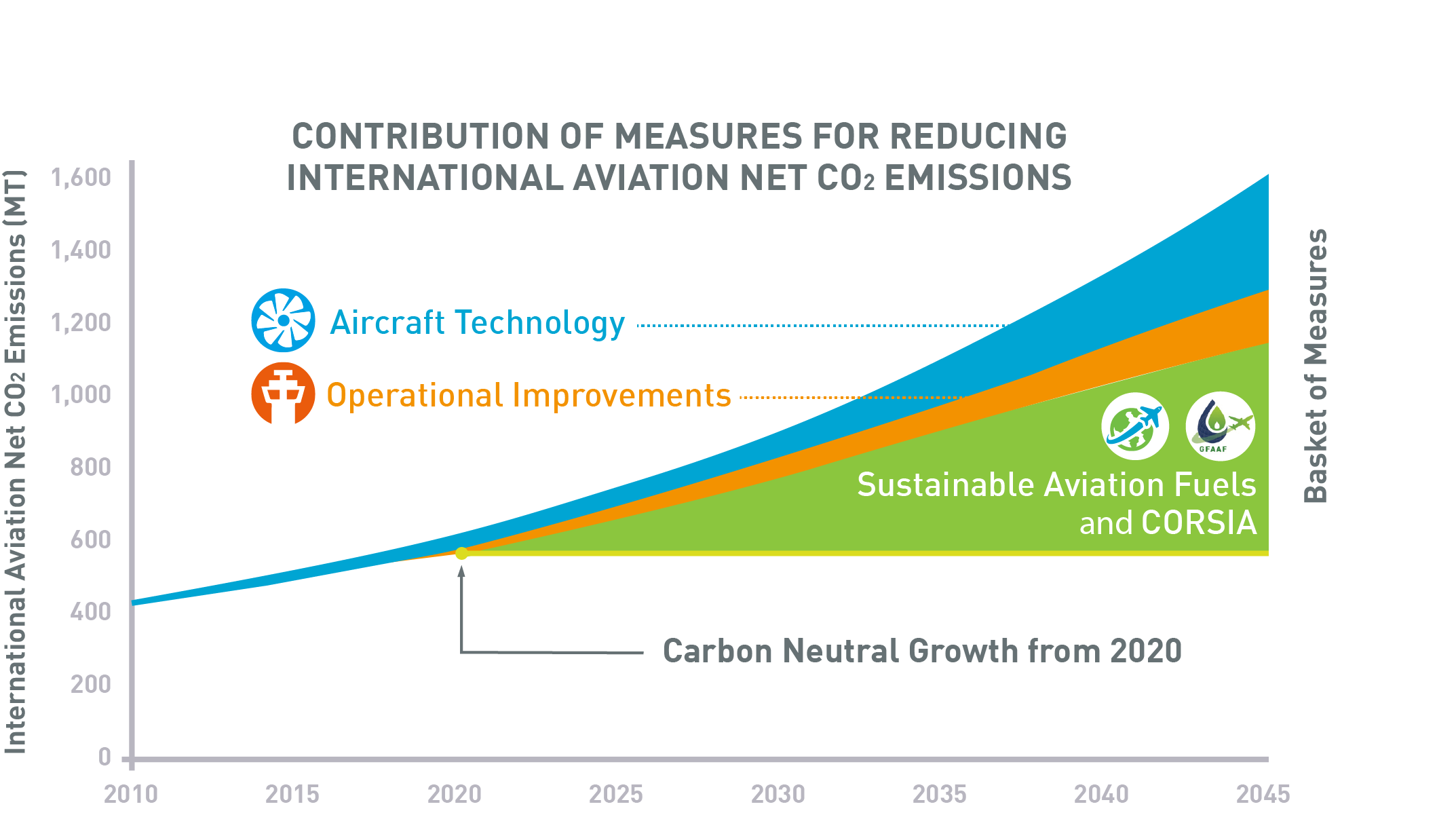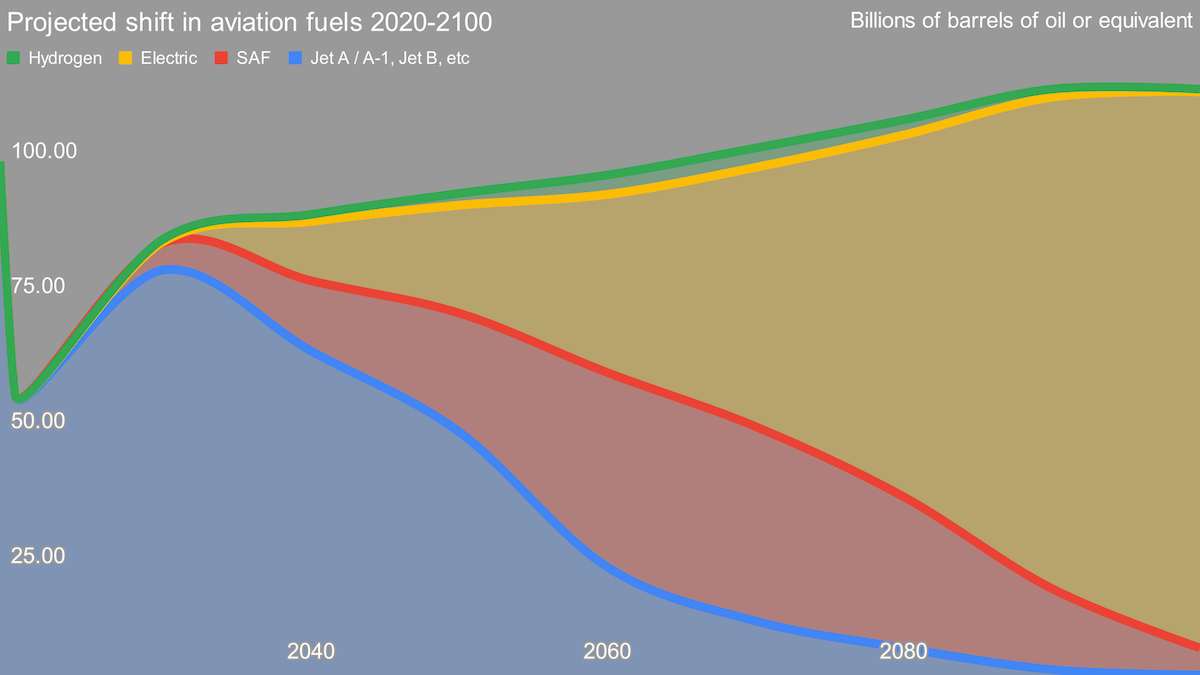
After the past three years, pretty much everyone on Earth now knows what the UN WHO (World Health Organization) is, even if some people have a very odd idea of what it does. A lot fewer people know what another two UN agencies, the IMO and ICAO, are and do. And we should, because their roles are critical to climate action. But one of the alphabetic organizations isn’t rising to the task, while the other has just made some serious strides.
Let’s start with what the acronyms stand for. The IMO is the International Maritime Organization. It’s the “global standard-setting authority for the safety, security and environmental performance of international shipping. Its main role is to create a regulatory framework for the shipping industry that is fair and effective, universally adopted and universally implemented.”
The ICAO is the International Civil Aviation Organization. It was “established to help countries share their skies to their mutual benefit. ICAO assists the 193 Contracting States to the Chicago Convention as they develop and adopt standards, practices, and policies for international civilian flight. Industry and civil society groups, in addition to relevant multilateral organizations, contribute importantly to these ICAO outcomes as ‘Invited Organizations’.”
In practice, they operate in pretty similar manners. They gather together national, industry, and relevant stakeholders, they form committees and working groups, they run workshops and conferences, and they hammer out agreements on standards, safety, regulations, and things like climate targets. But the tone is pretty different between the two, isn’t it?
Anything else in their About pages worth mentioning? Well, there’s this from the IMO:
“As part of the United Nations family, IMO is actively working towards the 2030 Agenda for Sustainable Development and the associated SDGs [sustainable development goals]. Indeed, most of the elements of the 2030 Agenda will only be realized with a sustainable transport sector supporting world trade and facilitating global economy. IMO’s Technical Cooperation Committee has formally approved linkages between the Organization’s technical assistance work and the SDGs. While the oceans goal is central to IMO, aspects of the Organization’s work can be linked to all individual SDGs.”
SDG 13, of course, is climate action.
What about the ICAO About page? Anything on sustainable development? Anything on climate change? Nope. Crickets.
The IMO has a much more action-oriented way of articulating its vision and purpose, and fronts up to sustainable development, including climate action, directly. The ICAO has a much more passive way of describing its role, and doesn’t bother to mention anything much except helping bring the glory that is civil aviation to every corner of the world. It’s unclear if either is overstating or understating its authority and influence.
Since the two industries are both climate change emission problems of the same order of magnitude, and are both considered hard-to-abate sectors, you’d think that perhaps, just perhaps, they’d place equal weight upon the matter. Until recently, that was true. Their last updates, from pre-COVID, were uninspiring.
What triggered this small digression into UN alphabet agencies that are barely known outside of their industries? Well, the IMO has a working group called the Marine Environment Protection Committee (MEPC). It just had its 80th session, MEPC 80, on 3-7 July 2023, at its headquarters in London, England. Bond aficionados would likely recognize it, as it’s just up the river from MI6 headquarters.
The MEPC, unsurprisingly, has the climate action file for the IMO. And unlike the last time they provided an update on maritime shipping and climate change, they actually had some good results out of this one. What are the biggies? For that, let’s turn to the UMAS. Another acronym? Yes, it stands for University Maritime Advisory Services. It’s the consultancy arm that’s part of the University College London (UCL) Energy Institute. It provided a useful FAQ on MEPC 80’s results, which I’ll crib from liberally.
“In terms of a reduction pathway the strategy sets expectations on the sector, and indeed on the development of future policy measures, to strive for 30% GHG reductions by 2030, 80% GHG reductions by 2040, on 2008 levels, and an overall level of ambition of reaching net-zero emissions as close to 2050 as possible.”
That’s a big step up, and as with many UN COP conferences, tiny countries, especially low-lying Pacific nations at risk of disappearing in a hotter world, did a bunch of heavy lifting to shame global attendees into doing more than they had in 2018. It’s possible that the string of heat records that were broken every day globally during the event had something to do with it as well.
There’s some even better news in there. That’s GHGs, not just carbon dioxide (CO2). They are explicitly including methane (CH4) and nitrous oxide (N20) in the targets. The last two have much higher global warming potentials than carbon dioxide, and are missing-in-action in carbon pricing solutions, if not social cost of carbon calculations, in many countries. And those are well-to-wake emissions, not just aboard-ship emissions. That’s going to frost the shorts of the global methanol and ammonia industries, which have clearly been angling to sell a lot of their unabated products to the industry with a promise to clean it up later.
So with all the good news, does this mean that these goals are aligned with heating of only 1.5° Celsius. No, no they aren’t. Still well off that requirement. Personally, I’ve given up on 1.5° in any event, so a hard-to-abate sector I spend a lot of time looking at getting good movement toward climate action for the first time is a win in my books.
There’s a lot of low-hanging fruit in maritime emissions reductions. A lot of the 2030 targets can be met with in-hand efficiency measures, including just slowing down. Some of it can be met with biodiesel. Some more of it can be met with electrification, although the UMAS and UCL Energy Institute apparently don’t know that batteries exist yet. They also think that ammonia made from green hydrogen is the preferred choice for low-carbon shipping fuels, so clearly they have some challenges with the basics of physics, economics, and operational safety. Nobody is perfect, and it’s not like they are alone in their head-scratching perspective on both green hydrogen-derived fuels and ammonia in particular.
Are these targets binding? No, not a chance. But the IMO is influential, and this broad agreement among stakeholders will drive national and regional regulations around the world. Basically, the industry, countries, and shipping industry have stood up and said, “this is what we can do and what we want to do.” Now it’s up to countries and economic organizations like the EU to force them to do it.

There are a bunch of work items around interim measures and impact assessments that came out of this that will start to result in more details in the next three or four years. And the MEPC is meeting again in 2028 to work on the next round of these, something that will likely strengthen them.
Oh, and the MEPC results also include language about a just and equitable transition, which translates into at least a desire to assist the global south, which hasn’t and isn’t causing global warming for the most part, but is seeing massive impacts from it.
So, good news. Not perfect news. Not binding commitments. Not aligned with 1.5°. But much better than even was expected from early days at the event, where the daily reports suggested something as bad as the last COP in Glasgow was underway. As noted, a bunch of sinking nations forced the assembled group to step up. I’m sure that there were individual heroes as well, people who were integral to forcing the reluctant group to consensus on firmer efforts.
And so, to the ICAO. Has the ICAO stepped up the way that the IMO just did? No, not yet.

ICAO graphic of aspiration to continue to be as big a climate change problem as they are today through 2050
They are still rocking their very feeble 2019 aspirational goals of “2% annual fuel efficiency improvement through 2050 and carbon neutral growth from 2020 onwards.”
What does that translate to? Well, it translates to the industry, which is responsible for about 5% of global warming emissions, saying that it’s not going to stop doing that or reduce it in any way, but instead they’ll grow rapidly, but all the new flights will be covered. Well, that’s actually too strong a way to put it. What they are actually saying is that they’ll grow as rapidly as possible, and have an aspiration to maintain the same massive emissions.
The ICAO has established the Carbon Offsetting and Reduction Scheme for International Aviation (CORSIA). Yeah, offsetting. The world is quickly realizing that offsetting has been a very poor solution, although it’s still key to a lot of 2050 net zero claims.
Underwhelming.

Projection of aviation fuel demand by type through 2100, chart by Michael Barnard, Chief Strategist, TFIE Strategy Inc.
I’ve done a projection through 2100 of a scenario I think is more likely to happen in aviation. It’s a lot less growth, and batteries and biofuels for the win, in my opinion. A lot more batteries will be on a lot more planes in hybrid and auxiliary power models in the coming years, and 3,000 kilometers of range on batteries alone is likely viable in the late 2030s. There are a lot of electric aerospace startups, including FLIMAX, which I’m on the advisory board of, and there are a lot of biofuels flowing into aircraft already. As I noted recently when talking about the many pathways to biofuels, Neste just turned on another 1.3 million tons of biofuel production in Singapore, with a million of those tons devoted to SAF biofuels for aircraft flying out of Changi.
But the ICAO isn’t helping the industry get there. Unlike the maritime industry, the aviation industry hasn’t stood up to be counted on the climate action file. That will be a problem for them unless they change that quickly.
I don’t like paywalls. You don’t like paywalls. Who likes paywalls? Here at CleanTechnica, we implemented a limited paywall for a while, but it always felt wrong — and it was always tough to decide what we should put behind there. In theory, your most exclusive and best content goes behind a paywall. But then fewer people read it! We just don’t like paywalls, and so we’ve decided to ditch ours. Unfortunately, the media business is still a tough, cut-throat business with tiny margins. It’s a never-ending Olympic challenge to stay above water or even perhaps — gasp — grow. So …



